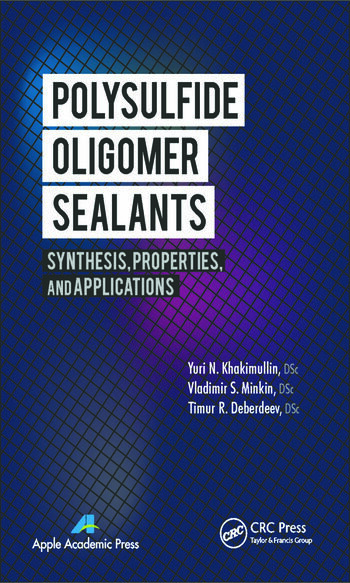Performance and Sustainability: Soy-Based Adhesives and Sealants Excel in Wide-Ranging Applications
U.S. soy delivers on sustainability and performance for myriad industries and products—including adhesives and sealants.

Renewable by nature, soybean oil is used in a diverse array of bio-based products. From biofuels for vehicles and resins for car and farm machinery parts to spray foam insulation and lubricants, versatile U.S. soy delivers on sustainability and performance for myriad industries and products.
Thanks to the environmental benefits and enhanced consumer perception of renewable products, soy has become a popular choice for many manufacturers. The farmer-led United Soybean Board (USB) is committed to bringing useful information to companies to fulfill sustainability goals and improve products with soy. According to John Jansen, USB’s vice president of Oil Strategy, investing in soy-based technology and innovation is an easy decision.
“Soy is a product that is sustainable and in abundant supply,” Jansen said. “We can identify markets where soy can help these companies become more sustainable while creating a higher demand for U.S. soy, and that’s a win for everyone.”
Sustainability Wins
In recent years, consumer and shareholder concerns have increased regarding overall sustainability and environmentally friendly components. Consumers are discovering that many products they know and love involve some unappealing chemical processes or inputs that make them pause before making a purchase. Companies are eager to satisfy customer demands, but swapping out ingredients can sometimes cause efficiency and performance losses. Fortunately, soy-based ingredients may be the answer to both of those concerns. Soy components in adhesives reduce the release of volatile organic compounds, including one of the most concerning: formaldehyde.
Specifically, the building and housing industry is looking for ways to meet “green” certification programs. Engineered wood products made with soy-based adhesives meet all global formaldehyde emission standards and are eligible for Leadership in Energy and Environmental Design (LEED) green building rating system points for improved indoor air quality. Soy-based adhesives are also eligible for California Air Resources Board (CARB) Phase 2 exemptions. LEED and CARB qualifications make soy-based adhesives and sealants a viable option when selecting more sustainable, abundant products over traditional adhesives and sealants.
The Carnegie Mellon University (CMU) School of Design used this technology to construct American hardwood plywood shelves and boxes. Its goal was to create a showcase room made with a proven soy-based assembly technology, which replaced formaldehyde-based glues.
“We work to make useful, durable pieces with clean and modern forms using socially conscious and environmentally responsible design and production processes,” said Miriam Devlin, Day Shift Furniture founder, who partnered with CMU for the project.
In addition to being a competitive alternative for formaldehyde-based adhesives, soy also provides direct value to the environment. Unlike fossil carbon sources, soybean plants sequester carbon, capturing carbon dioxide from the atmosphere and locking it into the soil. Soybean plants also fix their own nitrogen, which provides an initial lifecycle advantage over other oilseeds, which require nitrogen-based fertilizers often made from natural gas.
Renewable and Reliable Supply
Soybeans also provide an abundant and stable supply. Global production of soybeans has increased by more than 40% since 2006, according to recent market projections.1 In the U.S., production increases have been the result of higher yields and sustainable farming practices. Advancements in the agriculture industry ensure that the rate of soybean production is steady and sustainable for the future.
Significant domestic supply also removes the variability of international trade agreements, currency fluctuations, and foreign market influences. In particular, the support of organizations like USB ensures the path to product remains open. With the assurance of consistent yields, companies using soy-based adhesives can have their supply chain risk reduced and know a future ingredient change due to shortage is unlikely.
According to Jansen, USB is committed to building and sustaining the industrial use market for U.S. soy. “Soy-based adhesives and sealants are important to U.S. soybean farmers,” he said. “The checkoff has funded dozens of projects to encourage innovation in this sector.”
Sealing Concrete
With concrete, what’s applied is often more concerning than what’s in the concrete itself. For manufacturers of sealants and their customers, a soy-based sealant is a performance advancement with the added benefit of sustainable and natural elements. In the U.S. alone, abrasive deicers sprayed on roadways cause billions of dollars of damage.
During the freeze and thaw cycle, concrete joints expand and contract, which exposes pores in the roadway to deicers and other chemicals used on the pavement. These chemicals penetrate the pores and crystalize. Over time, the structural integrity of the concrete deteriorates, causing cracks in the concrete.
A bio-based sealant was created with support from USB that solves this problem and extends the life of concrete roadways and joints.2 According to recent studies, the concrete sealant can provide up to 10 years of protection against water, salt, and freeze-thaw damage.
The technology in the bio-based sealant is simple. To increase concrete durability over time, the pores in the concrete must be sealed so chemicals cannot penetrate the pores during freeze-thaw cycles. Typical solvent-based sealers only penetrate millimeters deep. The soy methyl ester-based sealants penetrate deeply into the pores and cracks of the concrete, creating a tighter seal.2
In addition, solvent-based sealers only prevent evaporation and drying of the concrete. Soy-based sealants create a flexible, hydrophobic barrier. The flexible barrier is ideal for harsh climates with frequent freeze-and-thaw patterns because the sealant expands and contracts with the concrete. Typically, the sealant is sprayed on the concrete during the construction process. However, it can also prevent additional concrete damage when it is applied into joints, cracks, or spalled areas.
Soy-based sealants also offer ancillary environmental benefits. They don’t contain volatile organic compounds, and there is no concern with runoff because the product is bio-based, nontoxic, and noncorrosive.
Wood Product Adhesives
Urea-formaldehyde formulas are the standard among adhesives, especially those used with wood.3 In 2004, when the International Agency for Research on Cancer reclassified formaldehyde from a suspect carcinogen to a known carcinogen, manufacturers knew they had to find an alternative to formaldehyde-based adhesives for the health of their employees. Research funded by USB led to the development of several sustainable, soy-based alternatives using soy flour. But why use soy flour?
Research at Auburn University, funded by USB and recently published in the International Journal of Adhesion and Adhesives, shows several benefits of using soy flour, derived from soy meal, to create wood adhesive. The study finds that soy-based wood adhesives are environmentally friendly, thanks to zero formaldehyde emissions, and feature attractive cost savings.4
Alabama soybean farmer and USB farmer-leader Annie Dee was involved in this project. “North American-oriented strand board production is about 20 million cubic meters,” she said. “These products are used indoors, where the moisture sensitivity of soy would not be an issue, and a higher level of soy flour substitution could be applied. There are also green benefits that accrue from the use of soy flour because MDI is hydrocarbon-based.
“According to the study, although soy flour augments the properties of MDI to a small extent, its major benefit is cost savings. Soy flour is about three times cheaper than MDI, so there is a significant cost savings for using soy in as high of a percentage as possible.”
Columbia Forest Products has seen strong success with this product since 2005.5 “Our customers want to know what they’re buying, how it was made, what it was made with and where it’s from, so we’re proud to say we shrank our environmental footprint with U.S. soy,” said Todd Vogelsinger, Columbia Forest Products’ director of Marketing.
Soy-based adhesives are water-based systems formulated with natural soy flour and a proprietary crosslinking resin. When blended, the resin reacts with the protein in the soy flour to form a durable, water-resistant thermoset comparable in strength and performance to urea-formaldehyde-based adhesives. Soy adhesives have excellent water resistance and are available in a wide range of binding strengths, making them suitable for many projects.6 Research has also shown that soy flour requires less drying time, uses less water and produces less waste when used in products like plywood adhesives.7
Thanks in part to research funded by USB, over 100 million panels of plywood have been produced using soy-based adhesives. The future is bright for industrial uses of soy, specifically in adhesives and sealants.
“At the United Soybean Board, we are passionate about supporting the best research and innovative new uses for soy,” Jansen said. “We take pride in all the current and potential uses for soybeans.”
For additional information, visit www.soynewuses.org.
Reference
- “Abundant Supply,” United Soybean Board, https://soynewuses.org/benefits/abundant-supply.
- “Pore Shield,” Indiana Soybean Alliance, www.soybasedsealer.com.
- “Urea Formaldehyde,” Science Direct, www.sciencedirect.com/topics/agricultural-and-biological-sciences/urea-formaldehyde.
- “Auburn Study Shows Soy Adhesives Reduce Carcinogens, Boost Cost Savings,” United Soybean Board, https://soynewuses.org/uncategorized/auburn-study-shows-soy-adhesives-reduce-carcinogens-boost-cost-savings/#_ftn1.
- “PureBond Hardwood Plywood Marks 100 Million Panels,” Woodworking Network, www.woodworkingnetwork.com/news/woodworking-industry-news/purebond-hardwood-plywood-marks-100-million-panels.
- “Adhesives,” United Soybean Board, https://soynewuses.org/common-uses/adhesive.
- “100 Million Panels of Plywood Use U.S. Soy,” United Soybean Board, https://soynewuses.org/uncategorized/100-million-panels-of-plywood-use-u-s-soy.
Looking for a reprint of this article?
From high-res PDFs to custom plaques, order your copy today!







